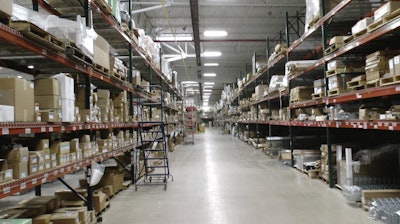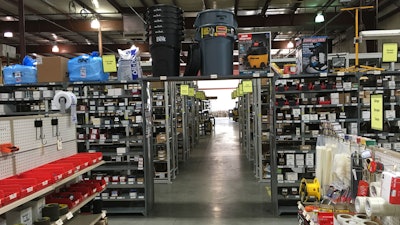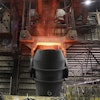
The wholesale distribution industry is waking up to the need for a digital transformation of their businesses. Although many wholesale distributors have a desire to digitalize and streamline their operations some have not started or indeed, even know where to begin. Many wholesale distributors are burdened with disparate or disconnected legacy systems and may still rely on spreadsheets and paper to manage processes along the supply chain. This can create siloed workspaces, making collaboration and getting accurate data a challenge as the state of the business is not based on a single source of truth.
In a nutshell, plenty of wholesale distributors are simply flying blind and operating without end-to-end visibility of their supply chain. The challenges of this can be felt throughout the business but acquiring and keeping the optimal amount of inventory to maintain customer service levels while minimizing capital investment is one issue that is top of mind for many distributors.
The Challenge of Inventory Optimization
Inventory optimization is more than just looking at historical data and then fielding a guess as to what the right number should be.
Providing customers with what they want at the right time and the right price is familiar territory for the wholesale distribution industry but today, there are more challenges to do this consistently with shifting market conditions. In addition to the many traditional factors to consider when managing inventory, distributors now need to contend with wildly random demand patterns, lack of availability, long lead times, and new business models.
These challenges are difficult to adapt to with paper-based or disconnected systems. Disruptions can take a long time to analyze when the data is tied up in different excel spreadsheets or systems, and by the time distributors cobble together the data it may be out of date.
The truth is that there is not just one best practice. Different strategies may work for optimizing inventory depending upon the delivery of customer value. Every so often having more inventory may result in a better strategy as availability, risk mitigation, and interest rates make inventory cheaper to hold; especially when there is a strong demand and high inventory turnover. Methodologies such as JIT (Just-in-Time) and lean may need to be augmented since the environment has more complicated and sophisticated requirements with issues to factor in.
Operating without visibility is one of the biggest blockers to supply chain performance and that is why wholesale distributors need to begin their journey towards achieving end-to-end visibility for inventory optimization.
 Mike Hockett/Industrial Distribution
Mike Hockett/Industrial Distribution
The Journey to E2E Visibility
The first step in this journey is the willingness to change and there is a strong upside to making this change. Wholesale distributors can increase revenue through responsiveness to changes in demand avoiding shortfalls and stockouts from unsatisfied sales. Distributors can reduce costs by eliminating redundancy in inventory as well as lowering transportation costs and resources due to sub-optimal outcomes from disruption or bad planning. Ultimately, optimizing working capital by reducing inventory and freeing up cash for reinvestment or increasing margins.
The roadmap to achieve end-to-end visibility will be different for every distributor, but there are a few basic goals needed to achieve business aspirations. This is a journey, not a destination. At the end of the day, distributors want to limit surprises and manage by exception to free up resources and create optimal business outcomes. A few broad areas required to address and reach business goals are:
Creating a single source of truth that connects operations, sales, marketing, and finance for collaboration and optimal decision-making
Integrate data across upstream and downstream networks to provide a real-time picture of the supply chain
Digitalize assets to create a digital mirror of the operations
Use predictive analytics for automation of real-time supply chain planning
Running real-time data will fundamentally change business processes. Having an accurate picture of the supply chain will allow distributors to make tradeoffs between what is happening upstream and downstream for ideal outcomes. For most distributors, this will allow them to pivot from a supply-side to a demand-driven business model as real-time planning is about events and not just old, disconnected data.
Conclusion
If the last year has taught us anything it is that business models need to be flexible, and the systems that distributors utilize must be able to handle disruptions and large shifts in the market. The key is leveraging intelligent tools to manage fluctuating demand and drive flexible business models through analyzing real-time data and using predictive technology. End-to-end visibility not only helps to streamline processes, but it generates valuable data to facilitate decision-making in real-time. Moreover, wholesale distributors can innovate the supply chain and automatically determine optimal inventory levels to establish the best practices for growing their business.
 Jordan
Jordan
Mark Jordan is a Solution Manager at SAP. He has more than 21 years of enterprise software product management and business development experience, the last 14 of which have been at SAP being responsible for all aspects of product management for multiple products. For more information on how wholesale distributors can expand beyond traditional industry boundaries and become a proactive, insight-driven distributor click here.






















